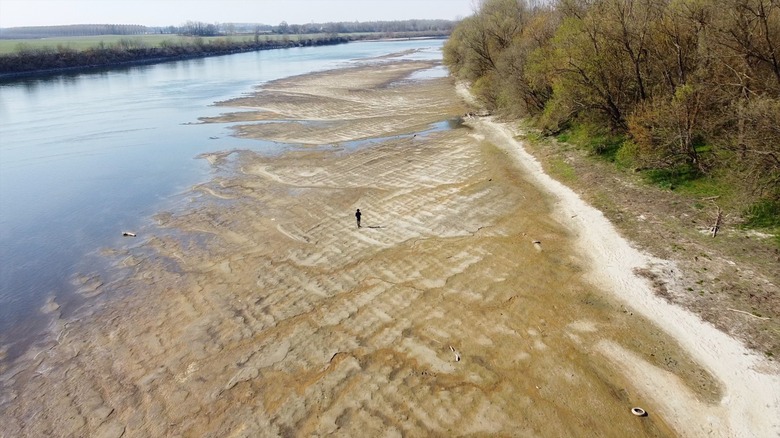Why Risotto Fans May Soon Have Trouble Finding This Beloved Dish
Risotto fans will know that authentic versions of their favorite rice dish are usually made with one of four different types of rice: Carnaroli, Volano, Baldo, or Arboreo. Per Italian Food Excellence, these varieties of Japonica rice are traditionally cultivated in Northern Italy's Po Valley, where rice has been grown since the mid-19th century.
But there were signs that all was not well in the Po Valley in June, where a combination of higher-than-normal temperatures as well as a milder winter meant less snow had fallen during the winter. As a result, less water was being seen flowing into the region, per The Guardian. By that time, worsening conditions had already forced the river administration to issue a warning and state that the Po Valley was seeing its worst drought in 70 years. "The snow in the Alps in Piedmont and Lombardy has totally run out," the agency, Utilitalia, said. "If this helped to replenish the flows of the Po in May, the large reservoir that usually acts as a buffer in the summer months is depleted. All the measurement stations along the Po, with the exception of Piacenza, are in severe drought conditions, with flow rates well below the average for the period."
Drought has decimated rice crops in Italy's once fertile valley
Today, the Associated Press says the main sources of water for the region, the Po and Dora Baltea rivers, are seeing levels that are eight times lower than they should be. "From the river Po, we were supposed to receive a flow rate of 160,000 liters (42,270 gallons) per second, while we currently have an approximate flow rate between 30,000 and 60,000 liters (7,925 to 15,850 gallons) per second," says Stefano Bondesa, who is president of a regional irrigation association.
While The Washington Post says Italy's main agriculture group is expecting to see a 30% drop in harvests, even this appears to be an optimistic assessment. According to France24, One farmer stated his income had dropped by at least 80% to 90% as drought decimate the rice crops which were meant to be flourishing in flooded paddy fields by this time, and said, "At this time of year, the plants would be up to my knees and the rice field would be flooded. Here, they're tiny, because the water needed to irrigate them has never arrived." Another farmer told the Associated Press, "Normally this field is supposed to be flooded with 2 to 5 centimeters (0.8 to 2 inches) of water, but now it seems to be on a sandy beach."

